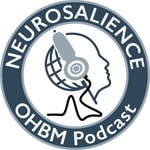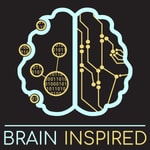Copernicus AI Podcast – Détails, épisodes et analyse
Détails du podcast
Informations techniques et générales issues du flux RSS du podcast.


Classements récents
Dernières positions dans les classements Apple Podcasts et Spotify.
Apple Podcasts
🇨🇦 Canada - physics
03/08/2025#76🇫🇷 France - physics
03/08/2025#44🇨🇦 Canada - physics
02/08/2025#74🇫🇷 France - physics
02/08/2025#44🇨🇦 Canada - physics
01/08/2025#74🇫🇷 France - physics
01/08/2025#43🇨🇦 Canada - physics
31/07/2025#72🇫🇷 France - physics
31/07/2025#41🇨🇦 Canada - physics
30/07/2025#72🇫🇷 France - physics
30/07/2025#40
Spotify
Aucun classement récent disponible
Liens partagés entre épisodes et podcasts
Liens présents dans les descriptions d'épisodes et autres podcasts les utilisant également.
See all- https://pdg.lbl.gov/
49 partages
- https://quantum-computing.ibm.com/
15 partages
- https://quantumcomputingreport.com/
7 partages
- https://aws.amazon.com/wavelength/
1 partage
Qualité et score du flux RSS
Évaluation technique de la qualité et de la structure du flux RSS.
See allScore global : 48%
Historique des publications
Répartition mensuelle des publications d'épisodes au fil des années.
CRISPR Epigenome
lundi 21 juillet 2025 • Durée 04:35
Episode Description:
Episode OverviewIn this episode of Frontiers of Research, host Antoni explores the revolutionary field of CRISPR epigenome editing with experts Dr. Sarah Chen and Dr. Josh Patel. They discuss how CRISPR technology is being adapted to modify epigenetic marks without changing the underlying DNA sequence, opening new possibilities for treating genetic diseases and understanding gene regulation.
Key Topics- The evolution of CRISPR from DNA editing to epigenome modification
- dCas9 and other catalytically inactive Cas proteins for targeted epigenetic editing
- Applications in treating genetic diseases through epigenetic reprogramming
- Challenges in achieving precise and reversible epigenetic modifications
- Current clinical trials and therapeutic potential
- Future directions in epigenome editing technology
CRISPR epigenome editing represents a paradigm shift in genetic medicine, offering the potential to treat diseases by modifying gene expression rather than changing DNA sequences. This approach could provide reversible treatments for a wide range of conditions while avoiding the permanent alterations associated with traditional gene editing.
References- Liao, H.K., Hatanaka, F., Araoka, T., Reddy, P., Wu, M.Z., Sui, Y., Yamauchi, T., Sakurai, M., O'Keefe, D.D., Nunez-Delicado, E., et al. (2017). In vivo Target Gene Activation via CRISPR/Cas9-Mediated Trans-epigenetic Modulation. Cell. https://doi.org/10.1016/j.cell.2017.01.038
- Liu, X.S., Wu, H., Ji, X., Stelzer, Y., Wu, X., Czauderna, S., Shu, J., Dadon, D., Young, R.A., Jaenisch, R. (2016). Editing DNA Methylation in the Mammalian Genome. Cell. https://doi.org/10.1016/j.cell.2016.09.049
Minimal Cells
lundi 21 juillet 2025 • Durée 04:10
Join us as we explore minimal cells, examining the latest developments and their implications for synthetic biology and biotechnology. This episode delves into cutting-edge research, engineering advances, and practical applications that are shaping our understanding of life's essential components.
Journey into the fascinating world of minimal cell engineering with "Minimal Cells: Engineering Life's Essential Components," where we explore how scientists are stripping cells down to their absolute essentials to understand the minimum requirements for life. This episode examines groundbreaking research that's revealing fundamental principles of biology while creating simplified living systems for biotechnology applications.
Minimal cells represent the ultimate reductionist approach to understanding life—engineered biological systems containing only the genes and cellular machinery absolutely necessary for survival and reproduction. By systematically removing non-essential components from naturally occurring organisms like Mycoplasma genitalium, researchers are discovering what constitutes the irreducible core of living systems.
What makes minimal cell research particularly significant is its dual impact on fundamental biology and practical applications. These simplified organisms serve as living laboratories for understanding basic cellular processes, while simultaneously offering platforms for biotechnology applications with unprecedented precision and control.
Join our hosts Antoni, Sarah, and Josh as they explore how researchers systematically reduce cellular complexity while maintaining viability, the role of Mycoplasma genitalium and other naturally minimal organisms, and applications in biotechnology and pharmaceutical production.
References Primary ReferencesGibson, D. G., Glass, J. I., Lartigue, C., et al. (2010). "Creation of a bacterial cell controlled by a chemically synthesized genome." Science, 329(5987), 52-56.
Hutchison, C. A., Chuang, R. Y., Noskov, V. N., et al. (2016). "Design and synthesis of a minimal bacterial genome." Science, 351(6280), aad6253.
Glass, J. I., Assad-Garcia, N., Alperovich, N., et al. (2006). "Essential genes of a minimal bacterium." Proceedings of the National Academy of Sciences, 103(2), 425-430.
Fraser, C. M., Gocayne, J. D., White, O., et al. (1995). "The minimal gene complement of Mycoplasma genitalium." Science, 270(5235), 397-403.
Koonin, E. V. (2000). "How many genes can make a cell: the minimal-gene-set concept." Annual Review of Genomics and Human Genetics, 1(1), 99-116.
Mushegian, A. R., & Koonin, E. V. (1996). "A minimal gene set for cellular life derived by comparison of complete bacterial genomes." Proceedings of the National Academy of Sciences, 93(19), 10268-10273.
Breuer, M., Earnest, T. M., Merryman, C., et al. (2019). "Essential metabolism for a minimal cell." eLife, 8, e36842.
Pelletier, J. F., Sun, L., Wise, K. S., et al. (2021). "Genetic requirements for cell division in a genomically minimal cell." Cell, 184(9), 2430-2440.
Lachance, J. C., Rodrigue, S., & Palsson, B. O. (2019). "Minimal cells, maximal knowledge." eLife, 8, e45379.
This research covers the engineering of minimal cellular systems, from the systematic reduction of genetic complexity to the creation of synthetic organisms that reveal the fundamental requirements for life and enable novel biotechnology applications.
MinimalCells #SyntheticBiology #CellularEngineering #Biotechnology #SystemsBiology #MolecularBiology #CellularSystems #BiomedicalEngineering #ArtificialLife #BiologicalEngineering #CellularDesign #Biomanufacturing #SyntheticLife #CellularBiotechnology #BioengineeredSystemsGreen Chemistry
lundi 21 juillet 2025 • Durée 16:31
Join us as we explore green chemistry, examining the latest developments and their implications for the future of science and technology. This episode delves into cutting-edge research, theoretical advances, and practical applications that are shaping our understanding of this fascinating field.
Explore the revolutionary transformation of chemical practices with "Green Chemistry: Sustainable Approaches to Chemical Synthesis," where we investigate how chemists are reimagining their discipline to create the materials and molecules society needs while minimizing environmental impact. This episode examines the principles, innovations, and challenges of developing chemical processes that are simultaneously effective, economical, and environmentally responsible.
Green chemistry represents a fundamental shift in how we approach chemical synthesis and manufacturing. Rather than treating pollution as an inevitable byproduct to be managed after production, green chemistry focuses on designing chemical processes that prevent waste formation from the outset. This approach encompasses everything from selecting renewable feedstocks and energy-efficient reactions to developing safer solvents and catalysts that enable more selective transformations. The goal is to create chemical processes with the smallest possible environmental footprint while maintaining or enhancing performance and economic viability.
What makes green chemistry particularly significant is its potential to address multiple global challenges simultaneously. By reducing hazardous waste, conserving energy, and utilizing renewable resources, green chemistry contributes to climate change mitigation, pollution prevention, and resource conservation. Moreover, these innovations often lead to safer working conditions, reduced regulatory burdens, and new economic opportunities. As industries from pharmaceuticals to electronics face increasing pressure to improve sustainability, green chemistry principles are becoming essential to maintaining both environmental and economic competitiveness.
Join our hosts Antoni, Sarah, and Josh as they navigate this transformative chemical landscape:
- The twelve principles of green chemistry and how they guide research and industrial practice
- Atom economy: designing synthetic routes that incorporate the maximum percentage of starting materials into the final product
- Catalysis innovations that enable reactions to proceed efficiently under milder conditions
- Alternative solvents including water, supercritical CO₂, and ionic liquids that replace hazardous organic solvents
- Biocatalysis: harnessing enzymes and microorganisms to perform selective chemical transformations
- Flow chemistry and continuous processing that minimize waste and energy consumption
- Renewable feedstocks derived from biomass as alternatives to petroleum-based starting materials
- Real-world case studies of green chemistry implementation in pharmaceutical, polymer, and consumer product industries
- Metrics and tools for assessing the environmental impact of chemical processes
- The economic and regulatory drivers accelerating green chemistry adoption
Through engaging conversation, our hosts balance scientific rigor with practical insights, exploring both the fundamental chemistry and the real-world implementation challenges. They examine how green chemistry is not merely about substituting individual reagents but about systems thinking that considers the entire lifecycle of chemical products.
Hashtags GreenChemistry #SustainableChemistry #Chemistry #Science #Education #Research #Knowledge #Discovery #Learning #Podcast #ScienceEducation #STEM References Key Publications- Anastas, P.T. & Warner, J.C. (1998). "Green Chemistry: Theory and Practice." Oxford University Press.
- Sheldon, R.A. (2012). "Fundamentals of Green Chemistry: Efficiency in Reaction Design." Chemical Society Reviews, 41(4), 1437-1451.
- Constable, D.J.C., et al. (2007). "Key Green Chemistry Research Areas—A Perspective from Pharmaceutical Manufacturers." Green Chemistry, 9(5), 411-420.
- Jessop, P.G. (2011). "Searching for Green Solvents." Green Chemistry, 13(6), 1391-1398.
- Sheldon, R.A. & Woodley, J.M. (2018). "Role of Biocatalysis in Sustainable Chemistry." Chemical Reviews, 118(2), 801-838.
- Plutschack, M.B., et al. (2017). "The Hitchhiker's Guide to Flow Chemistry." Chemical Reviews, 117(18), 11796-11893.
- Gallezot, P. (2012). "Conversion of Biomass to Selected Chemical Products." Chemical Society Reviews, 41(4), 1538-1558.
- ACS Green Chemistry Institute
- EPA Green Chemistry Program
- Green Chemistry Network
- Presidential Green Chemistry Challenge Awards
- Sheldon, R.A., Arends, I., & Hanefeld, U. (2007). "Green Chemistry and Catalysis." Wiley-VCH.
- Lancaster, M. (2016). "Green Chemistry: An Introductory Text." Royal Society of Chemistry.
- Dunn, P.J., Wells, A.S., & Williams, M.T. (2010). "Green Chemistry in the Pharmaceutical Industry." Wiley-VCH.
- Tang, S.L.Y., Smith, R.L., & Poliakoff, M. (2005). "Principles of Green Chemistry: PRODUCTIVELY." Green Chemistry, 7(11), 761-762.
Molecular Machines
lundi 21 juillet 2025 • Durée 12:51
Join us as we explore molecular machines, examining the latest developments and their implications for the future of science and technology. This episode delves into cutting-edge research, theoretical advances, and practical applications that are shaping our understanding of this fascinating field.
Molecular machines represent one of the most ambitious intersections of chemistry, physics, and engineering. These sophisticated molecular structures—including rotors, shuttles, switches, and motors—are designed to convert energy into controlled mechanical motions in response to specific stimuli. Unlike conventional machines built from metals and plastics, molecular machines operate in the quantum-influenced nanoscale world where Brownian motion, thermal fluctuations, and quantum effects dominate, requiring entirely different design principles than their macroscopic counterparts.
What makes molecular machines particularly significant is their potential to revolutionize fields from medicine to materials science. Nature has already demonstrated the power of molecular machinery through biological motors like kinesin and ATP synthase, which perform essential functions in living cells with remarkable efficiency. Synthetic molecular machines promise similar capabilities but with designer functions—from drug delivery vehicles that can navigate to specific tissues and release therapeutic payloads, to responsive materials that can change properties on command, to molecular-scale computing elements that could transcend the limitations of silicon-based electronics.
Join our hosts Antoni, Sarah, and Josh as they navigate this fascinating molecular frontier:
- The groundbreaking work of Nobel laureates Sauvage, Stoddart, and Feringa in creating the first synthetic molecular machines
- How chemists design interlocked molecules like catenanes and rotaxanes that can move relative to each other
- Light-powered molecular motors that can convert photons into continuous rotational motion
- The challenges of harnessing energy to overcome random thermal motion at the nanoscale
- Techniques for observing and measuring the movements of individual molecules
- Applications in targeted drug delivery, smart materials, and molecular-scale sensors
- The transition from single molecular machines to coordinated systems and networks
- Biomimetic approaches that draw inspiration from nature's molecular machinery
- The future prospects for molecular robotics and factories operating at the nanoscale
- Sauvage, J.P. (2017). "From Chemical Topology to Molecular Machines." Angewandte Chemie International Edition, 56(37), 11080-11093.
- Stoddart, J.F. (2017). "Mechanically Interlocked Molecules (MIMs)—Molecular Shuttles, Switches, and Machines." Angewandte Chemie International Edition, 56(37), 11094-11125.
- Feringa, B.L. (2017). "The Art of Building Small: From Molecular Switches to Motors." Angewandte Chemie International Edition, 56(37), 11060-11078.
- Erbas-Cakmak, S., Leigh, D.A., McTernan, C.T., & Nussbaumer, A.L. (2015). "Artificial Molecular Machines." Chemical Reviews, 115(18), 10081-10206.
- Kassem, S., van Leeuwen, T., Lubbe, A.S., Wilson, M.R., Feringa, B.L., & Leigh, D.A. (2017). "Artificial Molecular Motors." Chemical Society Reviews, 46(9), 2592-2621.
- Molecular Machines: The 2016 Nobel Prize in Chemistry
- Molecular Machines Research Group at University of Groningen
- Center for Integrated Nanotechnologies
- Drexler, K.E. (1986). "Engines of Creation: The Coming Era of Nanotechnology." Anchor Books.
- Jones, R.A.L. (2004). "Soft Machines: Nanotechnology and Life." Oxford University Press.
- Browne, W.R., & Feringa, B.L. (2006). "Making Molecular Machines Work." Nature Nanotechnology, 1(1), 25-35.
Chemical Bonds Molecules
lundi 21 juillet 2025 • Durée 02:22
Episode Description:
Today's segment explores the fundamental forces that hold matter together: chemical bonds. We dive into the fascinating world of molecular interactions, examining how atoms combine to form the incredible diversity of compounds that make up our world. From the water we drink to the proteins in our bodies, chemical bonds are the invisible architects of molecular structure and function.
Chemical bonding represents the foundation of chemistry and materials science. We'll explore the three primary types of chemical bonds: ionic bonds, where electrons are transferred between atoms; covalent bonds, where electrons are shared; and metallic bonds, which create the unique properties of metals. Each type of bond creates distinct properties in the resulting materials, from the brittleness of ionic crystals to the flexibility of organic molecules.
In our episode, we'll examine how electron behavior determines bonding patterns, including concepts like electronegativity, orbital hybridization, and molecular geometry. We'll discuss how Lewis structures help us visualize bonding, and how VSEPR theory predicts molecular shapes that determine chemical properties and biological functions.
The strength and nature of chemical bonds directly influence material properties. We'll explore how bond energy affects chemical reactivity, how intermolecular forces like hydrogen bonding and van der Waals interactions influence physical properties, and how understanding these relationships enables the design of new materials with specific characteristics.
Modern chemistry increasingly focuses on manipulating bonding interactions to create novel materials. From supramolecular chemistry and self-assembly to the development of new polymers and nanomaterials, our understanding of chemical bonding continues to drive innovation in fields ranging from medicine to electronics.
We'll also discuss how computational chemistry and quantum mechanics have revolutionized our understanding of bonding, allowing scientists to predict and design molecular structures with unprecedented precision.
Looking ahead, we'll explore how advances in bonding theory are enabling breakthroughs in areas like drug design, renewable energy materials, and sustainable chemistry.
ReferencesPauling, L. (1960). "The Nature of the Chemical Bond and the Structure of Molecules and Crystals." 3rd Edition. Cornell University Press.
Atkins, P., & de Paula, J. (2014). "Physical Chemistry: Thermodynamics, Structure, and Change." 10th Edition. W.H. Freeman.
Cotton, F. A., Wilkinson, G., Murillo, C. A., & Bochmann, M. (1999). "Advanced Inorganic Chemistry." 6th Edition. Wiley.
Hashtags:
chemistry #Chemistry #ChemicalBonds #Molecules #CovalentBonds #IonicBonds #MaterialsScience #QuantumChemistry #MolecularStructure #ChemicalReactions #NanotechnologyEdge Computing
lundi 21 juillet 2025 • Durée 16:02
Join us as we explore edge computing, examining the latest developments and their implications for the future of science and technology. This episode delves into cutting-edge research, theoretical advances, and practical applications that are shaping our understanding of this fascinating field.
Explore the revolutionary shift in how we process data with "Edge Computing Architectures: Bringing Intelligence to the Data Frontier," where we examine a paradigm that's fundamentally reshaping our digital infrastructure. This episode investigates how computation is moving from centralized cloud data centers to the network edge, closer to where data is generated and consumed.
Our hosts Antoni, Sarah, and Josh navigate this transformative technological landscape:
- The spectrum of edge computing from device edge to regional edge deployments
- How 5G networks and specialized hardware are accelerating edge adoption
- Real-world applications across manufacturing, retail, healthcare, transportation, and energy
- The synergistic relationship between edge computing and artificial intelligence
- Containerization, Kubernetes, and other technologies enabling distributed applications
- Security challenges and solutions in distributed architectures
- Edge AI optimization techniques including model pruning, quantization, and knowledge distillation
- The economic implications of shifting from centralized to distributed computing models
- Future trends including edge-as-a-service, federated learning, and autonomous edge operations
Through engaging conversation, our hosts balance technical depth with accessibility, exploring both the architectural principles and practical implementations. They examine how edge computing complements rather than replaces cloud computing, creating a continuum of resources from centralized data centers to the far edge.
Whether you're a technology professional interested in distributed systems, a business leader evaluating digital transformation strategies, or simply curious about the infrastructure powering next-generation digital experiences, this episode offers valuable insights into one of computing's most significant paradigm shifts.
Part of the Frontiers of Research podcast series, where complex technological concepts are made accessible through thoughtful conversation, revealing how distributed intelligence at the network edge is creating new possibilities for human-computer interaction and transforming industries across the global economy.
Key Publications- Shi, W., et al. "Edge Computing: Vision and Challenges." IEEE Internet of Things Journal. 2016
- Satyanarayanan, M. "The Emergence of Edge Computing." Computer. 2017
- Zhou, Z., et al. "Edge Intelligence: Paving the Last Mile of Artificial Intelligence with Edge Computing." Proceedings of the IEEE. 2019
- Mao, Y., et al. "A Survey on Mobile Edge Computing: The Communication Perspective." IEEE Communications Surveys & Tutorials. 2017
Neuromorphic Computing
lundi 21 juillet 2025 • Durée 26:23
Join us as we explore neuromorphic computing, examining the latest developments and their implications for the future of science and technology. This episode delves into cutting-edge research, theoretical advances, and practical applications that are shaping our understanding of this fascinating field.
Neuromorphic computing represents a fundamental departure from the von Neumann architecture that has dominated computing for decades. While conventional computers separate memory and processing—creating a bottleneck when shuttling data between them—neuromorphic systems integrate these functions, much like biological neurons that both store and process information. These brain-inspired architectures feature massively parallel processing, event-driven computation, and co-located memory and processing elements. By emulating the brain's efficiency and adaptability, neuromorphic systems aim to perform cognitive tasks with a fraction of the energy consumption of traditional computing approaches.
What makes neuromorphic computing particularly significant is its potential to overcome fundamental limitations in conventional computing for AI applications. The human brain performs remarkable feats of perception, learning, and adaptation while consuming roughly 20 watts of power—orders of magnitude more efficient than digital computers attempting similar tasks. By incorporating principles from neuroscience—such as spike-based communication, local learning rules, and distributed representation—neuromorphic systems could enable artificial intelligence capabilities in energy-constrained environments like mobile devices, autonomous vehicles, and remote sensors. Moreover, these systems may excel at tasks that remain challenging for traditional AI, including rapid learning from limited examples and adapting to novel situations.
Join our hosts Antoni, Sarah, and Josh as they navigate this fascinating computational frontier:
- The fundamental principles of neuromorphic design, from silicon neurons to spiking neural networks
- How neuromorphic chips like IBM's TrueNorth, Intel's Loihi, and BrainChip's Akida process information differently
- The role of memristors and other novel materials in creating brain-like adaptive circuits
- Event-based sensors that capture information more efficiently than conventional cameras and microphones
- Applications in edge AI, where power constraints make traditional deep learning approaches impractical
- Neuromorphic approaches to robotics that enable more fluid, adaptive movement and perception
- The interplay between neuroscience and computing, with each field informing the other
- Challenges in programming and training neuromorphic systems
- The potential for neuromorphic systems to help us better understand biological cognition
- Future directions including large-scale neuromorphic systems and hybrid approaches
- Mead, C. (1990). "Neuromorphic electronic systems." Proceedings of the IEEE, 78(10), 1629-1636.
- Indiveri, G., et al. (2011). "Neuromorphic silicon neuron circuits." Frontiers in Neuroscience, 5, 73.
- Davies, M., et al. (2018). "Loihi: A Neuromorphic Manycore Processor with On-Chip Learning." IEEE Micro, 38(1), 82-99.
- Merolla, P.A., et al. (2014). "A million spiking-neuron integrated circuit with a scalable communication network and interface." Science, 345(6197), 668-673.
- Furber, S.B., et al. (2014). "The SpiNNaker Project." Proceedings of the IEEE, 102(5), 652-665.
- Pei, J., et al. (2019). "Towards artificial general intelligence with hybrid Tianjic chip architecture." Nature, 572(7767), 106-111.
- Roy, K., Jaiswal, A., & Panda, P. (2019). "Towards spike-based machine intelligence with neuromorphic computing." Nature, 575(7784), 607-617.
- Intel Neuromorphic Research Community
- IBM Research: Brain-Inspired Computing
- Human Brain Project Neuromorphic Computing Platform
- Nengo Neural Simulator
- Brainchip: Neuromorphic Computing Solutions
- Izhikevich, E.M. (2007). "Dynamical Systems in Neuroscience: The Geometry of Excitability and Bursting." MIT Press.
- Liu, S.C., Delbruck, T., Indiveri, G., Whatley, A., & Douglas, R. (2015). "Event-Based Neuromorphic Systems." John Wiley & Sons.
- Schuman, C.D., et al. (2017). "A Survey of Neuromorphic Computing and Neural Networks in Hardware." arXiv:1705.06963.
- Markovic, D., et al. (2020). "Physics for neuromorphic computing." Nature Reviews Physics, 2(9), 499-510.
Artificial General Intelligence
lundi 21 juillet 2025 • Durée 31:01
Explore artificial general intelligence, examining the latest developments and their implications for the future of science and technology. This episode delves into cutting-edge research, theoretical advances, and practical applications that are shaping our understanding of this fascinating field.
Artificial General Intelligence (AGI) represents a fundamental shift from today's narrow AI systems—which excel only at specific tasks—to machines capable of understanding, learning, and applying knowledge across virtually any intellectual challenge. Unlike current AI that might master chess or generate text but fails at basic physical reasoning, AGI would possess the flexible, adaptive intelligence that characterizes human cognition, potentially leading to superintelligence that far surpasses human capabilities.
What makes AGI particularly significant is its potential to transform civilization itself. From accelerating scientific discovery to solving existential challenges like climate change and disease, AGI could usher in an era of unprecedented abundance and flourishing. Yet these same capabilities raise profound questions about control, alignment with human values, and our place in a world where we may no longer be the most intelligent entities.
Join our hosts Antoni, Sarah, and Josh as they navigate this complex landscape:
- The technical distinctions between narrow AI, artificial general intelligence, and superintelligence
- Timeline predictions from leading researchers and why estimates range from years to decades
- Recent breakthroughs in large language models and their implications for AGI development
- The alignment problem: ensuring superintelligent systems pursue goals compatible with human flourishing
- Potential benefits including healthcare revolutions, climate solutions, and scientific breakthroughs
- Existential risks and governance challenges that accompany increasingly powerful AI systems
- Philosophical questions about human identity, purpose, and values in an age of superintelligence
- Competing models for human-AGI relations: partnership, cosmic commons, guardian, or merger
- Practical approaches to governance that could help ensure beneficial outcomes
- Bostrom, N. "Superintelligence: Paths, Dangers, Strategies"
- Russell, S. "Human Compatible: Artificial Intelligence and the Problem of Control"
- Christian, B. "The Alignment Problem: Machine Learning and Human Values"
- Everitt, T., Lea, G., & Hutter, M. "AGI Safety Literature Review"
- Hendrycks, D. et al. "Unsolved Problems in ML Safety"
- Amodei, D. et al. "Concrete Problems in AI Safety"
- Dafoe, A. "AI Governance: A Research Agenda"
- Anderljung, M. et al. "AI Policy Levers: A Review of the U.S. AI Policy Toolkit"
- Cremer, C.Z. & Whittlestone, J. "AI Governance: Opportunity and Theory of Impact"
- Tegmark, M. "Life 3.0: Being Human in the Age of Artificial Intelligence"
- O'Keefe, C. et al. "The Windfall Clause: Distributing the Benefits of AI"
- Gabriel, I. "Artificial Intelligence, Values, and Alignment"
- Grace, K. et al. "When Will AI Exceed Human Performance? Evidence from AI Experts"
- Gruetzemacher, R. et al. "Forecasting AI Progress: A Research Agenda"
- Davidson, T. "Could Advanced AI Drive Explosive Economic Growth?"
Decomposable Flow Matching
lundi 21 juillet 2025 • Durée 02:41
Episode Description:
Today's segment dives into the exciting world of digital visual technologies with a special focus on a groundbreaking method called Decomposable Flow Matching (DFM). Developed to enhance the progressive generation of high-dimensional visual content, DFM simplifies and optimizes the creation process of digital images and videos. This episode unpacks how this innovative approach marks a significant improvement over existing technologies by offering superior visual quality with less computational demand. We'll explore the specifics of how DFM achieves these feats, its implications for future AI-driven visual media, and what it might mean for both creators and consumers.
Decomposable Flow Matching (DFM) is a methodology especially designed for the progressive generation of visual modalities, crucial in today's digitally-driven world where visual content dominates. The conventional process involves a coarse-to-fine synthesis that, while practical, comes with increased complexity and high computational costs. However, DFM introduces a streamlined and effective framework that stands out by implementing Flow Matching at each level of a user-defined multi-scale representation, like the Laplacian pyramid.
In our episode, we will dissect the recent study that unveils DFM's methodology and its applications. The research reveals how DFM, without the cumbersome features of previous approaches, improves the FDD scores on Imagenet-1k 512px by 35.2% over the base architecture and 26.4% over the best-performing baseline under identical computational conditions. Moreover, when applied to the fine-tuning of larger models such as FLUX, DFM accelerates convergence speeds, aligning quicker with the training distribution - a boon for developers working in AI and machine learning.
The simplicity of the DFM architecture, requiring minimal changes to existing training pipelines, positions it as a potentially transformative approach in the fields of video game design, virtual reality, and automated video production.
Looking ahead, we will explore potential future advancements enabled by DFM and how they might transform content creation, deepening the integration of AI in creative processes and possibly reshaping the entertainment and media industries.
Key Contributions: - Introduction of Flow Matching at multiple scales in a Laplacian pyramid structure - 35.2% improvement in FDD scores on ImageNet-1k 512px over base architecture - 26.4% improvement over best-performing baseline under identical computational conditions - Accelerated convergence when fine-tuning larger models like FLUX - Minimal changes required to existing training pipelines
Applications: - Medical imaging and diagnostics - Environmental monitoring - Autonomous vehicles - Video game design - Virtual reality - Automated video production
Primary ReferenceMoayed Haji-Ali, Willi Menapace, Ivan Skorokhodov, Arpit Sahni, Sergey Tulyakov, Vicente Ordonez, Aliaksandr Siarohin. "Improving Progressive Generation with Decomposable Flow Matching." arXiv preprint arXiv:2506.19839v1. http://arxiv.org/abs/2506.19839v1
Additional ContextThis research paper introduces Decomposable Flow Matching (DFM), a novel framework for progressive generation of high-dimensional visual content. The work demonstrates significant improvements in visual quality metrics while maintaining computational efficiency compared to existing baseline methods.
Hashtags:
computerscience #VisualTech #DigitalMedia #AI #MachineLearning #DeepLearning #Innovation #TechNews #VisualContent #ComputerScience #FlowMatchingMachine Learning Basics
lundi 21 juillet 2025 • Durée 04:45
Episode Description:
Today's segment introduces the fascinating world of machine learning, a branch of artificial intelligence that enables computers to learn and make decisions without being explicitly programmed for every task. We explore the fundamental concepts that power everything from recommendation systems to autonomous vehicles, breaking down complex algorithms into understandable concepts for both beginners and those looking to deepen their understanding.
Machine learning represents a paradigm shift in how we approach problem-solving with computers. Instead of writing specific instructions for every possible scenario, we train algorithms on data, allowing them to identify patterns and make predictions on new, unseen information. This approach has revolutionized fields ranging from healthcare and finance to entertainment and transportation.
In our episode, we'll cover the three main types of machine learning: supervised learning, where algorithms learn from labeled examples; unsupervised learning, where patterns are discovered in unlabeled data; and reinforcement learning, where agents learn through interaction with their environment. We'll explore popular algorithms like linear regression, decision trees, neural networks, and support vector machines, explaining how each approach tackles different types of problems.
We'll also discuss the crucial role of data in machine learning—how quality, quantity, and diversity of training data directly impact model performance. The episode covers important concepts like feature engineering, model validation, overfitting, and the bias-variance tradeoff that every machine learning practitioner must understand.
The practical applications of machine learning are vast and growing. From medical diagnosis and drug discovery to fraud detection and personalized marketing, ML algorithms are transforming industries and creating new possibilities for innovation. We'll examine both the tremendous potential and the important ethical considerations surrounding AI systems.
Looking ahead, we'll explore emerging trends in machine learning, including deep learning, transfer learning, and automated machine learning (AutoML), and discuss how these technologies might shape our future.
Primary ReferencesBishop, C. M. (2006). "Pattern Recognition and Machine Learning." Springer-Verlag.
Hastie, T., Tibshirani, R., & Friedman, J. (2009). "The Elements of Statistical Learning: Data Mining, Inference, and Prediction." 2nd Edition. Springer.
Murphy, K. P. (2012). "Machine Learning: A Probabilistic Perspective." MIT Press.
Goodfellow, I., Bengio, Y., & Courville, A. (2016). "Deep Learning." MIT Press.
Rosenblatt, F. (1958). "The perceptron: A probabilistic model for information storage and organization in the brain." Psychological Review, 65(6), 386-408.
Vapnik, V. N. (1995). "The Nature of Statistical Learning Theory." Springer-Verlag.
Breiman, L. (2001). "Random Forests." Machine Learning, 45(1), 5-32.
LeCun, Y., Bengio, Y., & Hinton, G. (2015). "Deep learning." Nature, 521(7553), 436-444.
Silver, D., Huang, A., Maddison, C. J., et al. (2016). "Mastering the game of Go with deep neural networks and tree search." Nature, 529(7587), 484-489.
This collection covers the theoretical foundations and practical applications of machine learning, from classical statistical learning theory to modern deep learning approaches.
Hashtags:
computerscience #MachineLearning #ArtificialIntelligence #DataScience #AI #Algorithms #NeuralNetworks #DeepLearning #ComputerScience #Technology #Innovation








